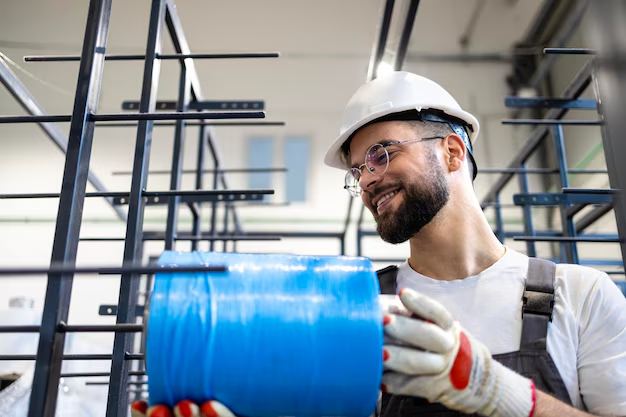What Gas Is Used in Refrigerators and Air Conditioners? Understanding the Essentials
When it comes to the modern conveniences we often take for granted, refrigerators and air conditioners top the list. These appliances keep our food fresh, drinks cold, and homes cool, all thanks to the invisible gases working behind the scenes. But which gases are used in these essential appliances, and why are they critical? Let's delve into the fascinating world of refrigerants to understand their role and impact.
🧊 The Basics of Refrigerants
Refrigerants are special substances used in cooling mechanisms such as refrigerators and air conditioners. They are pivotal to the refrigeration cycle, which involves absorbing heat from inside a refrigerator or room and then expelling it outside. Understanding the types of gases used as refrigerants can shed light on their utility, safety, and environmental impact.
What Makes a Good Refrigerant?
A suitable refrigerant must have properties that allow it to absorb and release heat efficiently. Here's what makes an ideal refrigerant:
- Heat Absorption and Release: Ability to absorb heat from the environment and release it when compressed.
- Non-toxic and Safe: Should not pose significant risks to human health.
- Non-flammable: Lower risk of contributing to fires.
- Environmentally Friendly: Minimal negative impact on the ozone layer and climate.
Common Refrigerants in Use
Refrigerants have evolved over time to become more efficient and less harmful to the environment. Let's explore the common types used today:
HFCs (Hydrofluorocarbons)
Description: HFCs gained popularity as they do not deplete the ozone layer. Examples include R-134a and R-410A, widely used in domestic refrigerators and air conditioners.
Considerations: Despite being safer for the ozone, they have a high global warming potential (GWP), prompting a shift toward more sustainable options.
CFCs (Chlorofluorocarbons) and HCFCs (Hydrochlorofluorocarbons)
Description: Previously common, especially R-12 (CFC) and R-22 (HCFC), these have been largely phased out due to their significant ozone depletion potential.
Transition: The Montreal Protocol has been instrumental in reducing the production and consumption of these substances.
Natural Refrigerants: Hydrocarbons and Ammonia
Hydrocarbons (HC): Include isobutane (R-600a) and propane (R-290). These are gaining favor due to their low environmental impact and efficiency.
Ammonia (R-717): Commonly used in industrial refrigeration systems, celebrated for its thermodynamic properties and low GWP, although it is toxic and requires careful handling.
Considerations: While environmentally friendly, hydrocarbons are flammable, raising safety concerns that are mitigated through advanced safety systems in modern appliances.
Why the Shift to Environmentally Friendly Refrigerants?
The shift towards eco-friendly refrigerants is driven by international agreements and environmental awareness. Here's why it's crucial:
- Ozone Protection: Reducing substances that damage the ozone layer safeguards the earth from harmful UV radiation.
- Climate Change Mitigation: Lowering the GWP of refrigerants helps in minimizing the carbon footprint and mitigating climate change.
🌍 The Environmental Impact of Refrigerants
While life-saving in their own right, traditional refrigerants have posed challenges to environmental sustainability. Here's how they impact our planet:
Ozone Depletion Potential (ODP)
Refrigerants like CFCs and HCFCs contribute significantly to ozone layer depletion, which increases UV radiation exposure on Earth, impacting human health and ecosystems.
Global Warming Potential (GWP)
Many refrigerants, even those safe for the ozone, contribute to greenhouse gas emissions when released into the atmosphere. The industry's focus on low GWP substances is vital for slowing climate change.
Innovations and Alternatives
To counter these effects, innovations like hydrofluoroolefins (HFOs) are promising, offering low GWP and efficiency without compromising performance.
🛠️ Implementation in Refrigerators and AC Units
Understanding which gases are used in refrigerators and air conditioners helps us appreciate the complex engineering that cools our homes and preserves our food.
How They Work
The refrigeration cycle relies on the refrigerant's ability to change states (from liquid to gas) to transfer heat effectively.
- Compression: The refrigerant gas is compressed, raising its temperature and pressure.
- Condensation: The hot gas passes through condenser coils, releasing heat, and turning into a liquid.
- Expansion: The liquid refrigerant expands, reducing pressure and cooling it significantly.
- Evaporation: As it moves through evaporator coils, the refrigerant absorbs heat, cooling the surrounding air or contents of the refrigerator.
Latest Technologies
Modern appliances now integrate smart technologies and efficient designs to optimize refrigerant use, reduce leaks, and enhance performance while using less energy and environmentally friendly substances.
🔍 Practical Considerations for Consumers
Understanding the refrigerants in your appliances can guide purchase decisions and maintenance approaches.
Safety and Maintenance Tips
- Regular Servicing: Ensure your refrigerator and AC are serviced regularly to prevent leaks.
- Proper Installation: Professional setup ensures proper handling of these gases, reducing safety risks.
- Awareness: Familiarize yourself with the refrigerant type used in your appliance for informed replacements and servicing.
Environmental and Ethical Consumption
- Eco-labels: Look for labels indicating low GWP or natural refrigerant usage.
- Recycling and Disposal: Follow guidelines for safe disposal of old appliances, ensuring refrigerants are not released into the atmosphere.
Key Takeaways: Your Guide to Eco-Friendly Cooling Solutions
Here's a quick summary of practical insights for consumers:
- 🔍 Check Refrigerants: Opt for appliances using low GWP refrigerants like HCs or advanced HFOs.
- 🛠️ Prioritize Regular Maintenance: Keeps your appliances efficient and minimizes leaks.
- ♻️ Practice Responsible Disposal: Proper disposal prevents harmful environmental impact.
- 👀 Stay Informed: Follow updates on new refrigerant technologies and environmental regulations.
Appreciating the role of refrigerants not only highlights the marvel of modern technology but also underscores our responsibility towards environmental stewardship. As we become more conscious consumers, the choices we make about our appliances can contribute significantly to a sustainable future. By focusing on efficient and eco-friendly cooling solutions, both manufacturers and consumers can impact the world positively.
